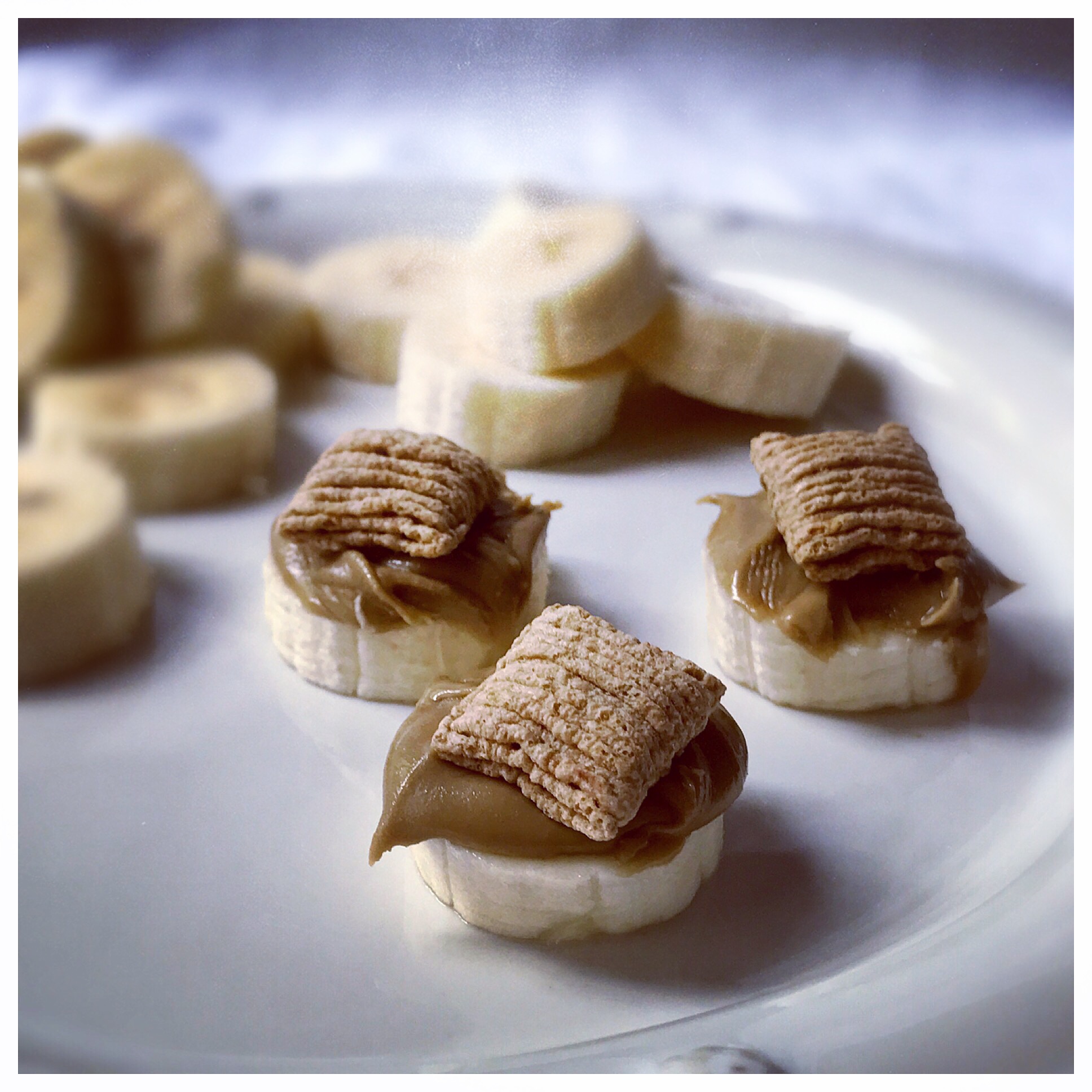"Shoot!", I thought as I was about fifteen minutes from taking the ice for my warmup. "I forgot my snack. Oh well, too late now. I'm sure I'll be fine. I'm sure I don't actually need that banana. I feel fine. It's just like eight total minutes of skating."
An easy snack that I love pre or post exercise! Sun Butter Banana Oat Bites can also be found here
Fast forward about twenty-five minutes later. I made it through my warmup and, I'll say, it was decent. I didn’t feel strong like I knew I could feel. However, I just rationalized it as nerves that always vanish as soon as my music begins and carried on. After a mediocre warmup I exited the ice and kept warm while talking with my coach. "I'm feeling stronger” I thought. "I can do this." I removed my skate guards and handed my sweater to my coach. The announcer called my name and as the cold icy air pierced my skin, I lifted my head high, took a deep breath, and skated out to my beginning pose, trying to leave my hesitations in the warmup room.
At this point in my skating life, I felt like I had at least my early morning pre-performance eating strategy down. I knew my go-to meal, timing and routine for these early morning competitions. What I was still working on, however, was the timing for those awkward mid-day to late - afternoon performances. This competition happened to be around 1:30 p.m., smack in the middle of the day and lunchtime. At that point breakfast had certainly worn off and the question was, do I eat lunch before or after my skate? I couldn't eat a huge lunch because then it might not digest in time. But should I eat a little something before I compete or wait until after I finish? With limited time to go, I brushed off the necessity of this pre-performance snack, telling myself it was simple superstition and went on with my warmup routine.
Now I was standing on the ice, focused on the task at hand, ready to go. My music began and I pressed into my first strokes and leaned into those beginning edges. Unfortunately that is as good as it got. The program was rough, to say it kindly. I remember literally talking to my legs while skating, saying "What are you doing? Get it together!" But it was useless. My legs felt like jello and my body was shaky, making landing any jump next to impossible and causing spins to be far from tight and centered. That was one of those performances that I was happy to end and as I put my skate guards back on and made my way to my family I realized how low my blood sugar was. I was hungry and a pre-performance snack would from then on be a pre-performance necessity.
Athletes work hard every day so that they can perform their best when it counts. It’s important not to let a lack of pre-event nutrition be the reason those practices don’t pay off. It’s important to determine what nutrition your body needs for your best performance and to determine not only what but also when the body needs it, then making it a necessity in your practice and performance day plan (remember, never perform on something you have not practiced on first!). Now, if a meal was eaten an hour or two or three before the event, a snack may not be needed. However, in the instance like I have talked about here, where the last meal was far away, a snack is most-likely a benefit or necessity.
Remember that the closer you are to the event, the simpler your snack should be. That means the closer you get to the event the less protein, fiber, and fat a snack should contain as these components are all more difficult for the body to digest. Need some ideas? I’m leaving you with a few of my tried and true favorites below.
Happy fueling!
Taylor
10 simple pre-event snacks for the young athlete
Fresh fruit (banana, grapes, orange slices, melon, etc. whatever is best tolerated by the athlete)
Dried fruit (raisins, cherries, apple, etc.)
Simple granola bar (Quaker Chewy bar, MadeGoodbar, Belvita breakfast cookies)
Pretzels
Crackers (salty crackers if you’re a heavy and / or salty sweater)
Jam sandwich
Slice of toast with honey
Dry cereal (My go-to’s are Cheerios & Quaker Oatmeal Squares)
Small fig bar ( I really like these)
Pre-event homemade trial mix (dry cereal + dried fruit)
Apple sauce pouches
Sports Drinks (regular, not zero sugar)
Happy Fueling!
Taylor


